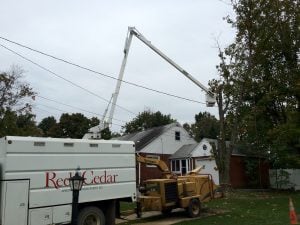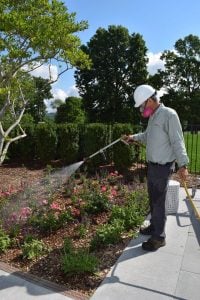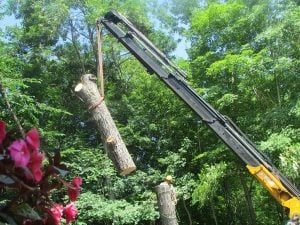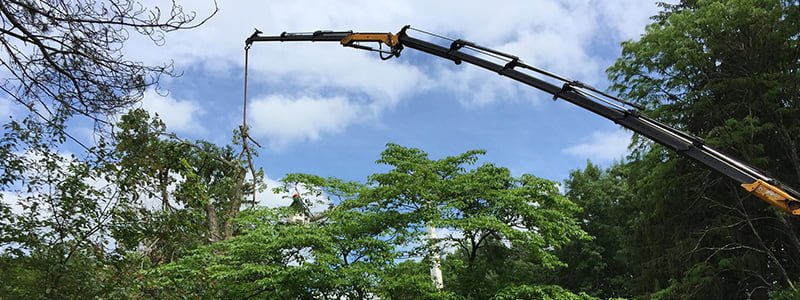What Separates An Arborist from A Hacker?
Implementing plans that facilitate the tree health of existing trees on a homeowner’s property is one of the most important practices of a professional arborist. When we talk about caring for existing trees of a mature size on your property, there are three important sequential phases all professional arborists should follow.
- Review
- Repair
- Replace
Review:
 Review refers to a proper and honest site evaluation. During the site evaluation, an inspection of existing trees should be completed. Also, if trees are to be removed for safety reasons, this is a good time to talk about replacements.
Review refers to a proper and honest site evaluation. During the site evaluation, an inspection of existing trees should be completed. Also, if trees are to be removed for safety reasons, this is a good time to talk about replacements.
When discussing future planting, it is important to touch on a few key factors:
- Type of species to be planted
- How these species will react with existing trees/plants and environment
- Projected future planting dates
- Plans for planting native trees (trees are best at resisting disease and insects when in their native environment)
When conducting a thorough inspection of existing tree health we will look for things like:
– Defects
- Soon to be defects
- Cracks
- Rubbing branches
- Decay
- Basal root plate injuries
- Stem girdling roots (type of dysfunctional root that is growing against a tree’s stem)
– Hazard targets (within surrounding area that could suffer from damages)
- Valuable objects/structures
- Human occupancy
- Proximity to your home
- Play areas
- Expensive landscape
 Some areas of examination during this step may also focus on ways to proactively maintain the health of your existing trees, as well as future trees like:
Some areas of examination during this step may also focus on ways to proactively maintain the health of your existing trees, as well as future trees like:
- Pest scouting (looking for potential pest problems and/or how to prevent them)
- Soil modification (modify the physical or chemical characteristics of soil without excavating)
- Moisture monitoring
Repair:
Following the review stage, your trees can be placed in one of the following categories.
- Repair
- “watch and monitor”
- Remove
Structural pruning is best done in the first three years of a tree’s life. Also completed during this time is pruning of defective tree parts, cabling and bracing weak branches, and pest control. Co-dominant leaders, which describes trees that have rubbing or crossing of branches, are the best candidates for repair (this usually can only be done while a tree is small). It is important to be continually monitoring and nurturing these trees during their repair stage.
Replace:
Unfortunately, the trees that were placed in the “remove” category during your site evaluation were put there because they cannot be repaired and will need to be removed and/or replaced. Some defects that cannot be repaired are:
- Basal root plate injuries

- Leaning trees
- Heartwood decay
- Severe cracks
At this point these trees have become a safety hazard and need to be removed to avoid threat to the surrounding hazard targets we listed earlier.
When removing and replacing a tree, we will focus on a few areas to make sure the new tree is as healthy as possible. Finding a suitable replacement basically means the right tree and the right place.
Here are some things to consider when finding a suitable replacement:
- Adequate space for new tree’s full size expectations
- Pest maintenance
- Working with one of our landscape designers to select the right trees and location on property
- Proper planting procedures to aid in tree’s success
- Establishing a long-term care plan
When it comes to your property’s tree care, without appropriately following the “review, repair, replace” procedure, some trees may be removed or replaced that could have instead been repaired back to health. When hiring a professional arborist like Red Cedar, we make sure to thoroughly evaluate your property to find the best solution for your trees. It is our job to evaluate whether your trees can be saved or need replacing. If they can be fixed, we can help put together a tree care plan that will bring them back to their best health! Call us today for your free consultation!



The tree next to my home is starting to rub against my home, and I think it might start causing damage. It makes sense that I would want to get a professional arborist! they would be able to safely remove the threatening branches for me.